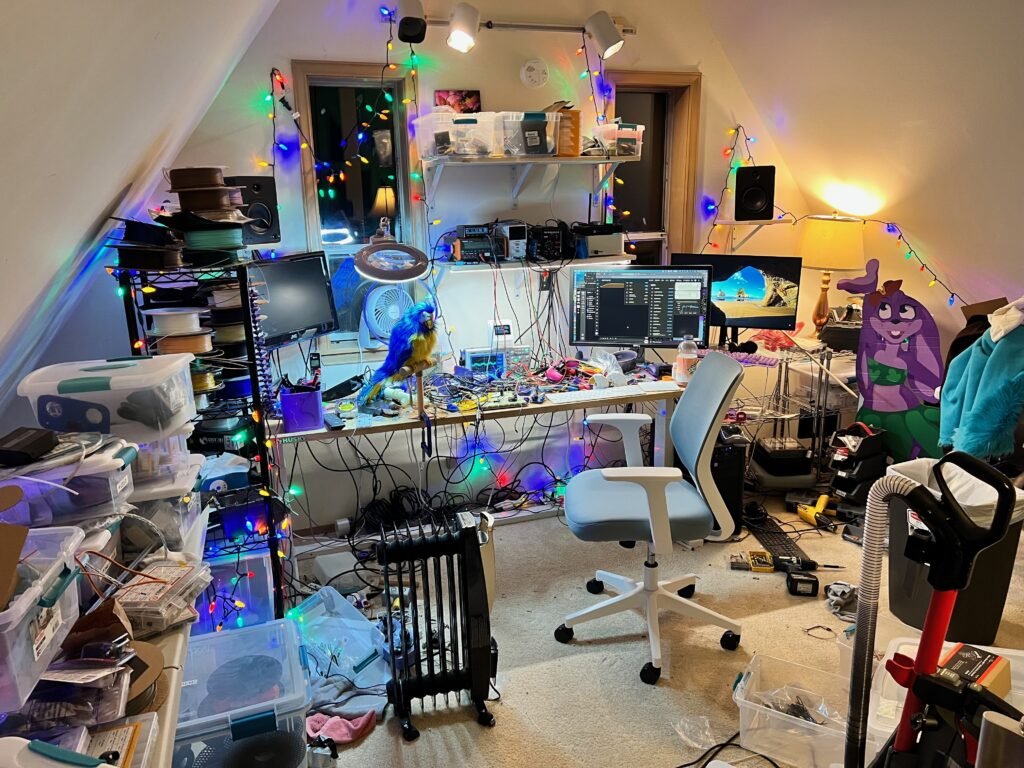Welcome to my workshop!

My name is April, and this is my portfolio! I’m an engineer, but not the cool kind of engineer that drives trains. I’m the kind of engineer that makes silly things just for fun.
This website is where I show the things I’ve made, how they work, and the reasoning behind the decisions I’ve made. It’s also a fun place to learn how my stuff works, if you’re curious!